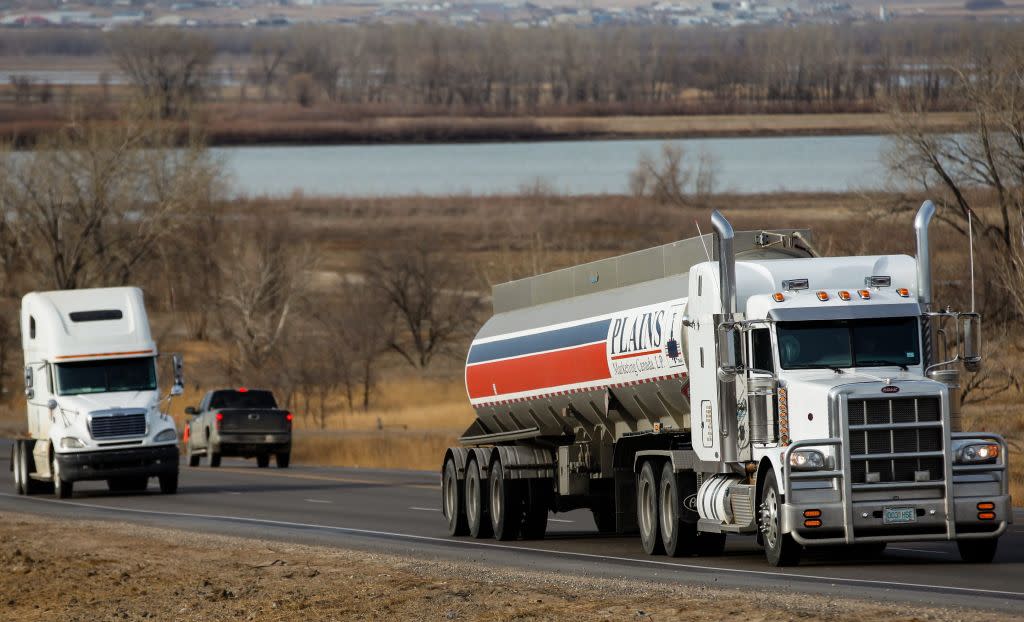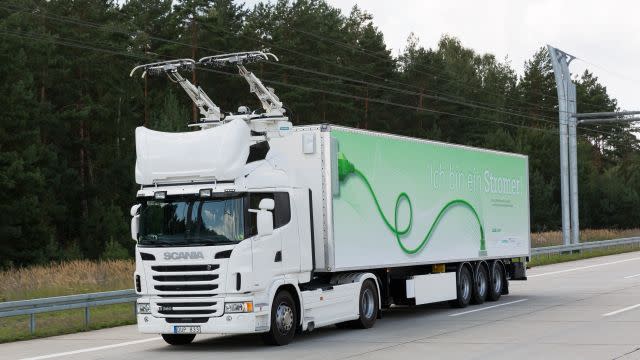Tesla plans to unveil a semi-truck but batteries still can’t pack enough energy for long-haul trucking

Tesla is moving into the heavy vehicle market, and the first glimpse of the new Tesla Semi is due this fall. On April 13, Tesla CEO Elon Musk congratulated his team on the “amazing job” designing the forthcoming truck, while also announcing a pickup truck would be out in 18 to 24 months and a convertible roadster sometime in the future.
Tesla Semi truck unveil set for September. Team has done an amazing job. Seriously next level.
— Elon Musk (@elonmusk) April 13, 2017
The Tesla Semi, an all-electric truck program led by Jerome Guillen, Tesla’s former Model S program director, has been long anticipated. Tesla’s updated Master Plan last July stated the Tesla Semi will “deliver a substantial reduction in the cost of cargo transport, while increasing safety and making it really fun to operate.” But first, Tesla will need to solve a key problem: range.
Electric cars have limited range, but electric semi-trucks will have far less. Existing lithium-ion batteries capable of powering a semi-truck for 500 miles (804 kilometers) would weigh 23-tons, half the weight of the truck itself, estimates German engineering firm Siemens. Even Tesla’s more efficient battery cells from its Gigafactory plant with Panasonic aren’t likely to shave too much off that number. Tesla executives have said its new batteries for the upcoming Model 3 are 30% more efficient than the Model S, but far bigger gains, and potentially a new battery chemistry, would be needed change the equation for hauling cargo long distances.
Ian Wright, a former vice president of vehicle development at Tesla who left in 2004 and went on to found Wrightspeed, an electric truck company, says pursuing long-haul electric trucking with batteries alone is futile. “It don’t make any sense in a long-haul application,” Wright said in an interview with Quartz last year. “It’s off by order of magnitude.” Wright says all-electric trucks lack the energy density to haul cargo over hundreds of miles. Wrightspeed’s electric garbage trucks use on-board gas turbines to recharge the trucks’ batteries, while regenerative braking recoups energy during start-and-stop traffic.
Musk hasn’t revealed if the Tesla Semi will deviate from the company’s current battery strategy. To enable long-haul applications, one option is embedding wireless charging coils in roadbeds (although that is still seen as expensive, inefficient and a regulatory headache.

Overhead wires provide electric power to trucks.
A second option, presented by Siemens last year, uses overhead wires to charge fast-moving trucks on highway journeys. Field trials for unlimited-distance electric trucks using this system have already started. California has its own one-mile (1.6 kilometers) eHighway between ports in Los Angeles and Long Beach. But bigger charging infrastructure—whether buried or overhead—would require massive new public investment.
Tesla has remained silent on its intentions, but the company has made it a habit of defying conventional wisdom. Solving Tesla Semi’s problem may need more than an engineering solution.

Sign up for the Quartz Daily Brief, our free daily newsletter with the world’s most important and interesting news.
More stories from Quartz:

